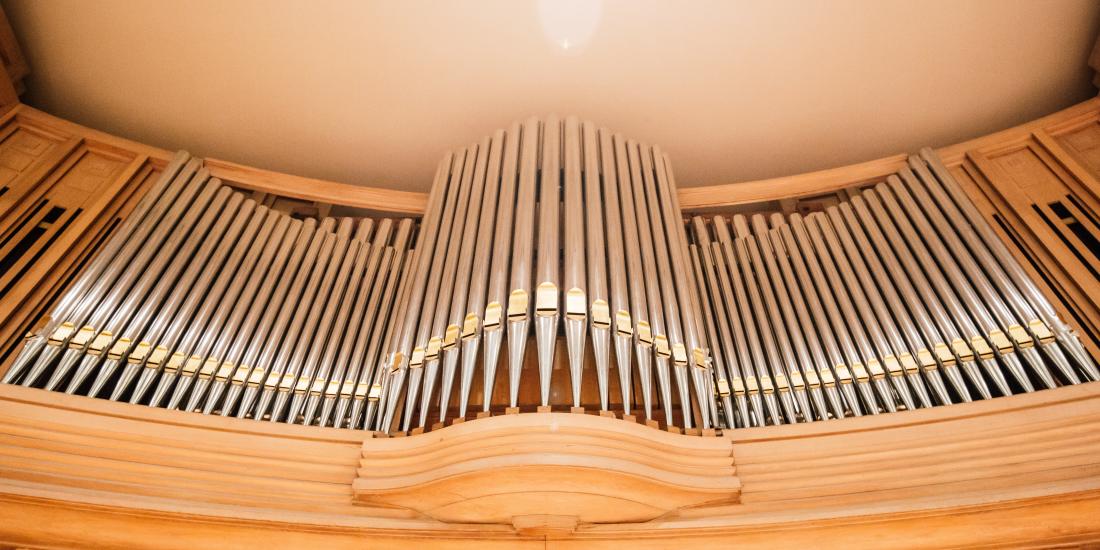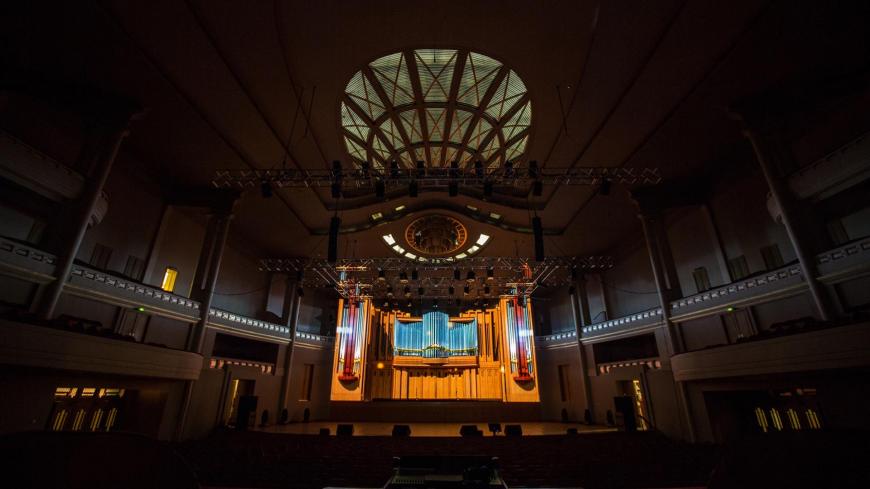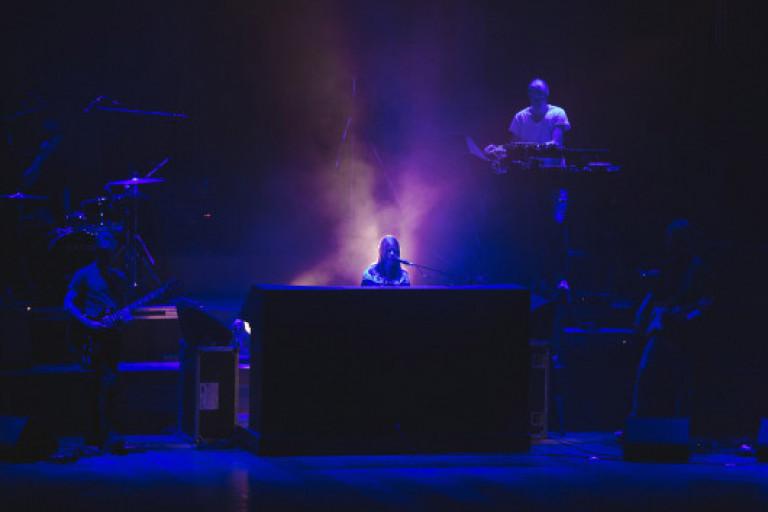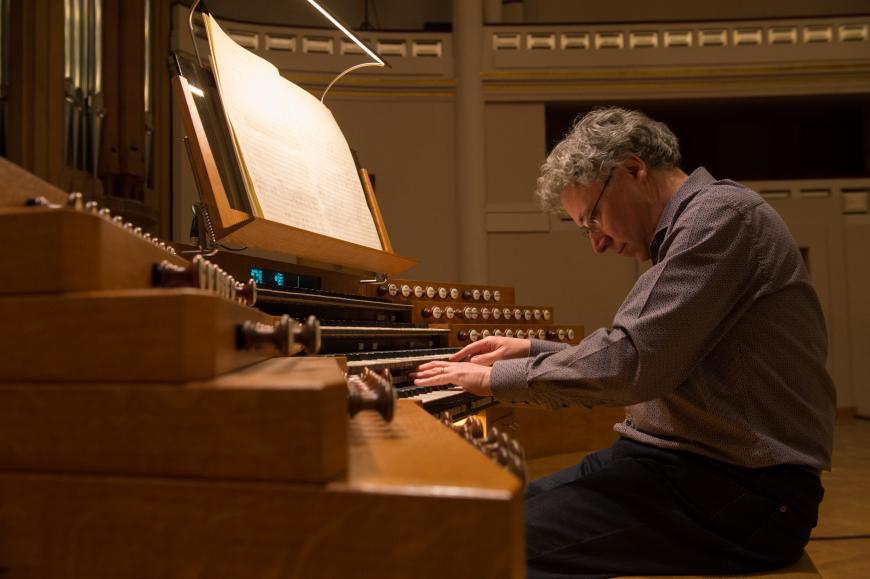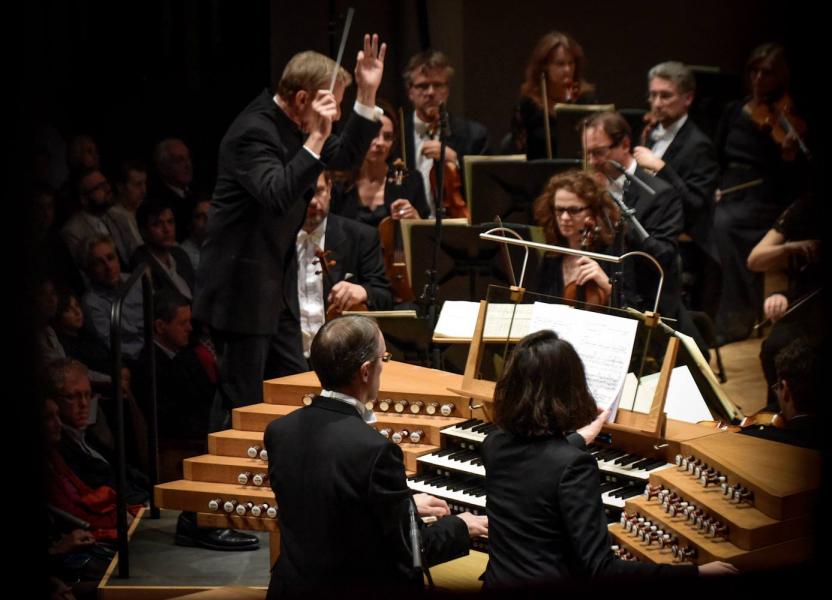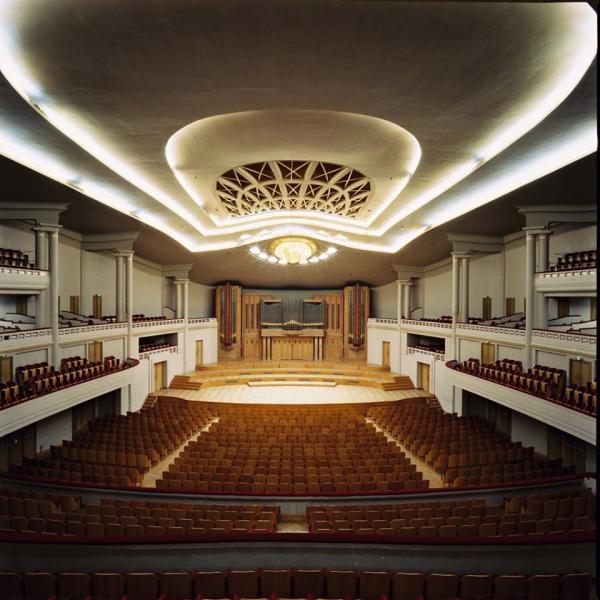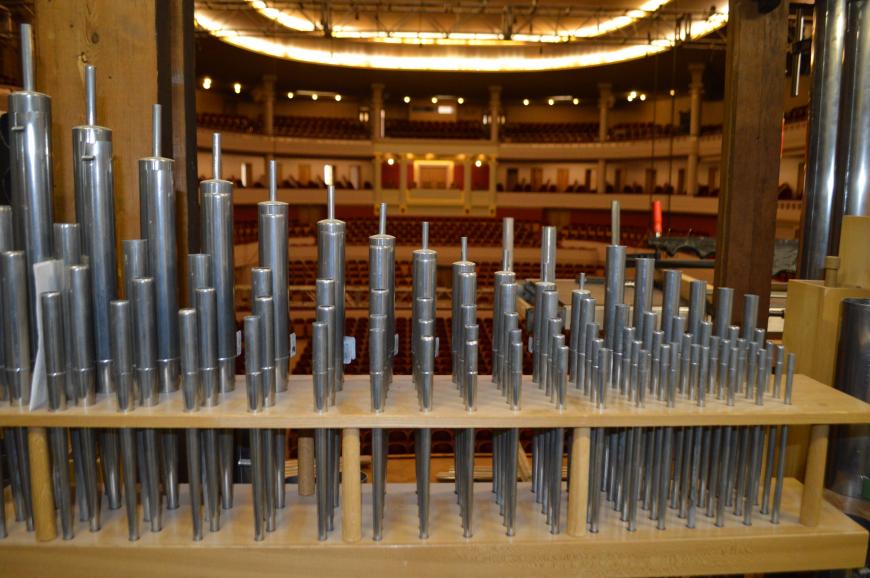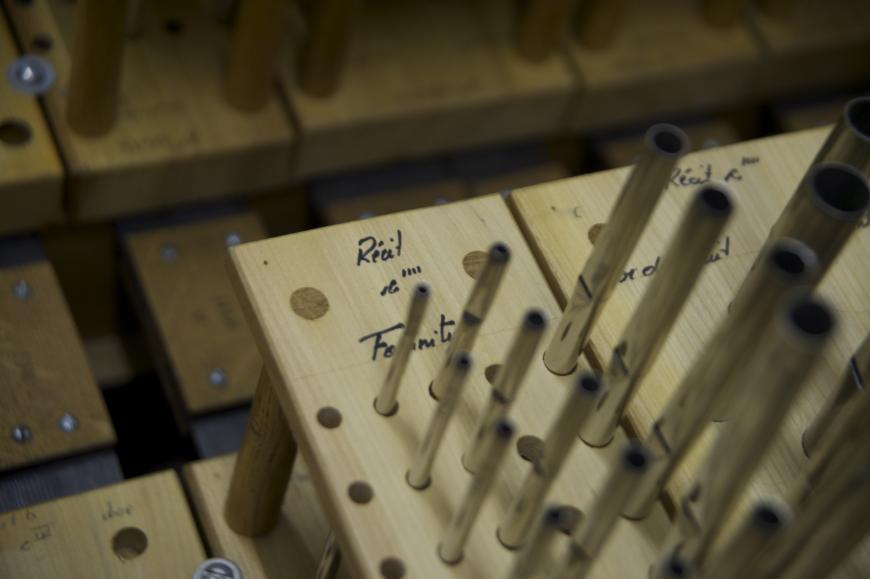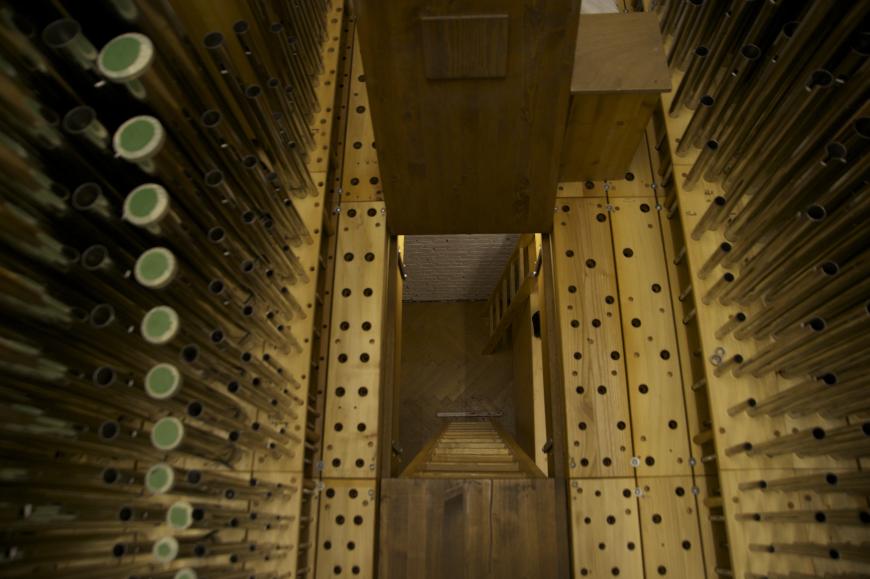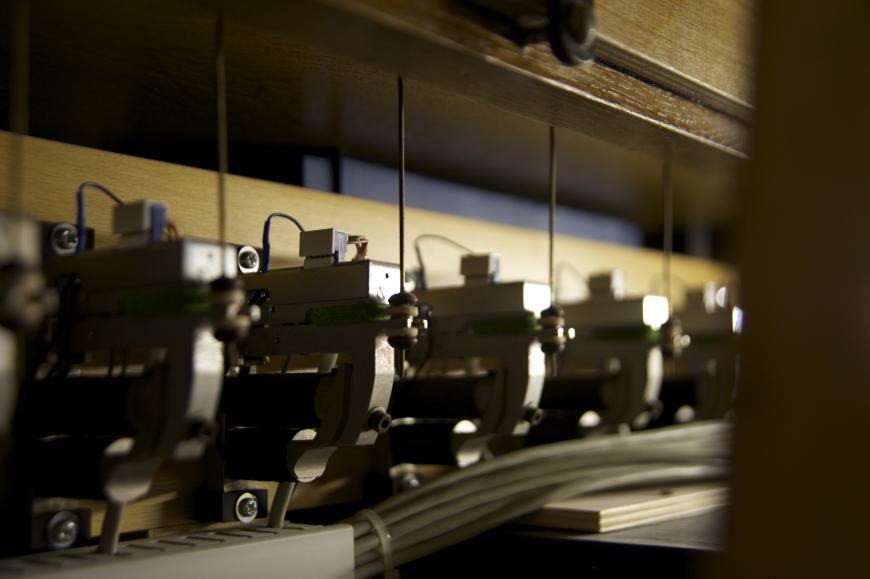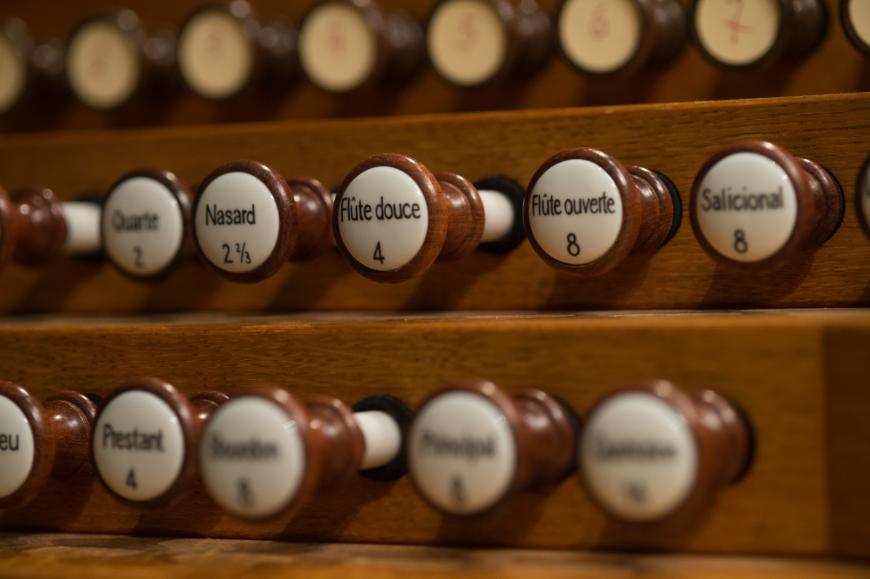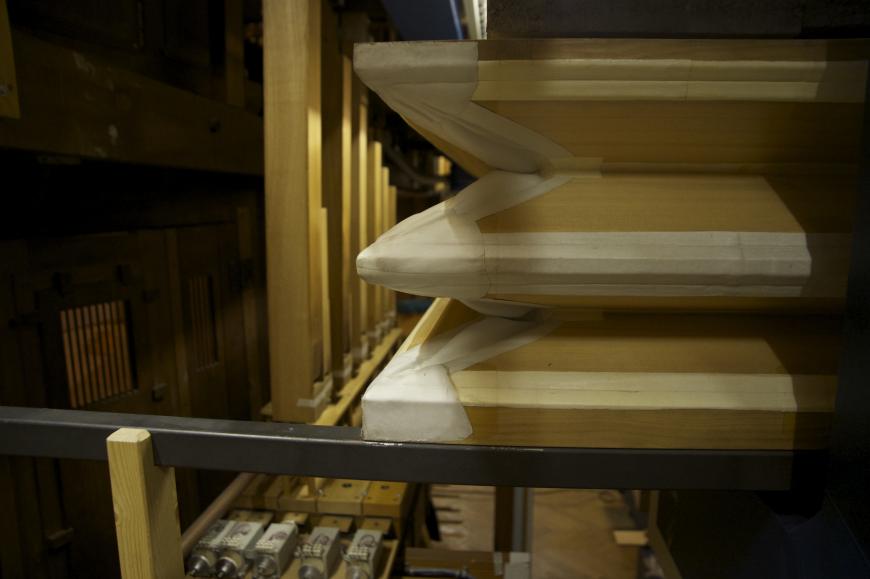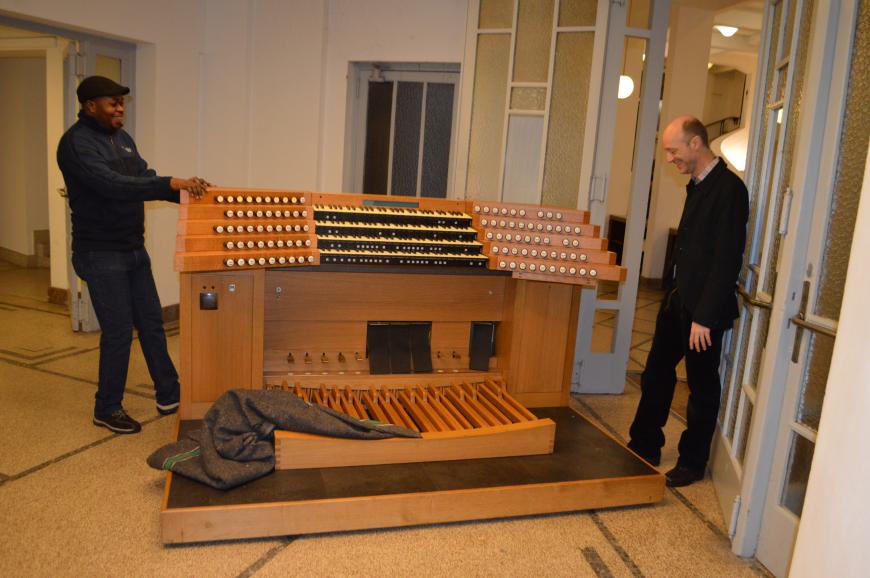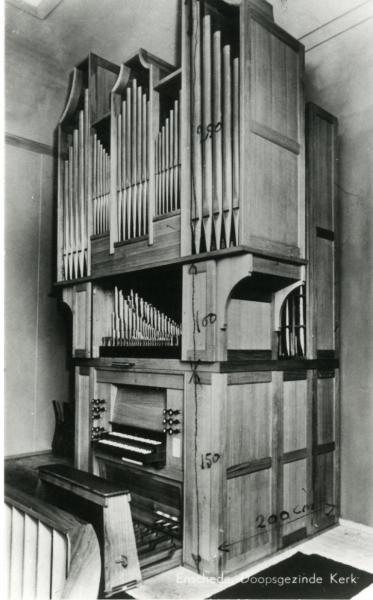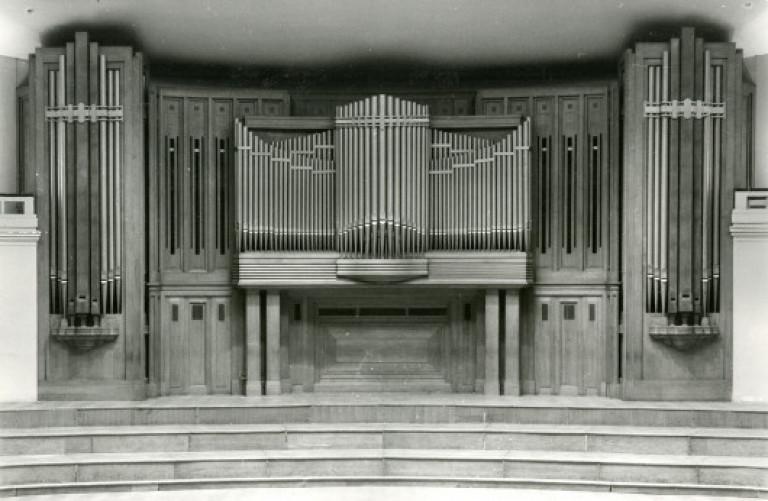The Good Times
The Centre for Fine Arts was inaugurated in 1928, but audiences in Brussels had to wait another two years before hearing the organ resound for the first time in Victor Horta’s dazzling Henry Le Bœuf Hall. The story began in 1930, when Joseph Stevens, an organ builder from Duffel, completed the building of the instrument. It should be noted that the outcome was a marked departure from Horta’s desire to set the organ in the oval of the Great Hall, mirroring the royal box facing it. In any case, with its 74 stops, three manuals and one pedalboard, the organ would become an inseparable feature of the Great Hall.
“Stevens’ organ enhances the national Centre for Fine Arts edifice and is a tribute to the craftsmanship of a country whose builders once provided the sound palette for the Dutch masters, direct ancestors of J.S. Bach.”
The instrument was designed as an organ that could “play anything”, in keeping with the neoclassical aesthetics in vogue in France at the time. This universalist aesthetic was meant to enable organists to play five centuries of music on the same instrument. The greatest organists of the 20th century would play on the Stevens organ.
A Series of Setbacks
As luck would have it, in 1967, a fire broke out in the basement of the Henry Le Bœuf hall, partly damaging the structure of the organ. The instrument designed by Stevens was in fact not to the liking of the artistic directors of the Centre for Fine Arts at the time, who called for a new instrument to be built. Various temporary solutions were found, including the installation, in 1971, of a small Dutch neo-baroque organ in the large empty organ case.
It was only in 1988 that a project for a new organ began to emerge under the direction of Belgian organist Bernard Foccroulle. A lengthy construction process began in 1993, undertaken by the Luxembourg organ builder Westenfelder, and was only completed in 2017 thanks to the work of the French duo Bernard Hurvy and Olivier Robert, and the intervention of the Belgian organ builder, Pieter Vanhaecke.
No efforts were spared in the course of this endeavour, delayed by the renovation of the Henry Le Bœuf Hall, the bankruptcy of a subcontractor and repeated water damage, among other factors. The project was funded mainly by private donations.
The Rebirth
In 2017, after 50 years of silence, the new organ finally revealed its full range of sound at its inauguration. The technological jewel that combines tradition and modernity is endowed with some 4,200 pipes, 60 stops, four manuals and a pedalboard. Leading soloists such as Olivier Latry, Bernard Foccroulle and Benoît Mernier offered audiences moments of pure musical delight, including works for organ and orchestra.
In the years that followed, every new season at Bozar would rhyme with Organ Night Fever, a nocturnal festival combining the organ with electronic and contemporary music, jazz, cinema, dance... These concerts, as well as the traditional series of recitals, featured musicians such as John Zorn, Anna von Hausswolff, Iveta Apkalna, Karol Mossakowski, Jef Neve, Cindy Castillo, and Serge Schoonbroodt.
For three years, this unique instrument added a new dimension to Bozar's musical offering.
“The instrument has found its true place in Bozar's cultural project. The restoration resulted in a symphonic instrument of the first order, both in terms of its size and sound quality, without forgetting the state-of-the-art technology that provides unparalleled playing flexibility. The electronic innovations in the BOZAR organ make it an instrument capable of reproducing three centuries of repertoire, from Bach to present-day music, while also stimulating the creativity of composers and performers. It is remarkable to see how this instrument has filled a void in Belgium’s organ heritage.”
History Repeats Itself
On 18 January 2021, while BOZAR was struggling to sustain the cultural life of the capital during the Covid-19 pandemic, a fire destroyed part of the roof of the Centre for Fine Arts. Efforts to extinguish the flames caused considerable water damage to the newly refurbished organ. The threat of silence once again weighs heavily on this instrument, which for too long has been reduced to an ornamental function. The damage is severe and further restoration work will be necessary to breathe new life into the battered hero of this incredible saga.
